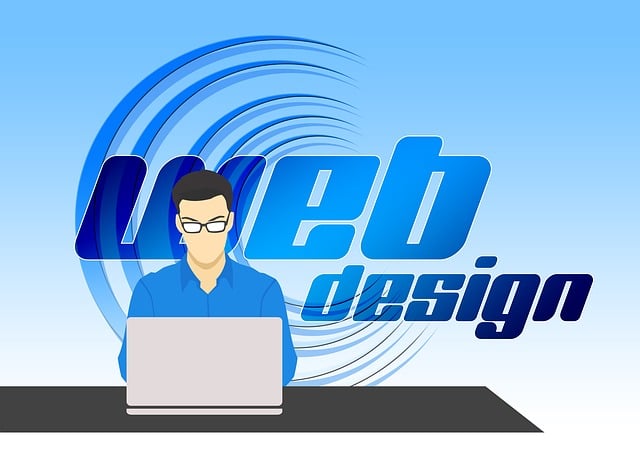Full-service web design offers an integrated approach, encompassing strategy, design, development, launch, and maintenance. It involves collaboration among experts in various fields to create intuitive, visually appealing, and high-performing websites that meet client expectations. This process includes defining project scope through consultations, effective information architecture, wireframing/prototyping for UX, engaging visual design aligned with brand identity, front-end development for user-friendly interfaces, robust back-end functionality, rigorous QA testing, and continuous post-launch maintenance and support.
In today’s digital landscape, a comprehensive website design and development strategy is paramount for business success. This article delves into the intricacies of full-service web design, offering a holistic approach that transcends mere aesthetics. We explore every critical step from defining client needs to launching and maintaining robust, user-centric websites. Understanding the entire process empowers businesses to create not just websites, but powerful digital experiences that drive growth and engagement.
Understanding Full-Service Web Design: A Comprehensive Approach

Full-service web design encompasses a comprehensive range of services, from initial concept and strategy to final development, launch, and ongoing maintenance. It’s more than just building a website; it’s about creating an online presence that aligns with your brand identity, engages your target audience, and drives business growth. This approach ensures a seamless experience for users, as all aspects of the project are handled by a single, specialized team.
In a full-service web design model, experts in various fields collaborate to deliver a complete solution. This includes graphic design, user interface (UI) and user experience (UX) planning, content creation, coding, search engine optimization (SEO), and post-launch support. By integrating these services, the team can create intuitive, visually appealing, and high-performing websites that not only meet but exceed client expectations.
Defining the Scope: Client Needs and Project Objectives

Defining the scope of a project is a critical step in any full-service web design process. It involves understanding the client’s unique needs and goals, which will shape the direction of the entire development journey. Through comprehensive consultations, designers and developers gather essential requirements, ensuring the final product aligns with the client’s vision. This initial phase sets the foundation for a successful website, catering to user expectations and business objectives.
Client collaboration is key here, as their insights enable the design team to create a tailored solution. By identifying target audiences, key messaging, and desired functionalities, they can set realistic project parameters. This process ensures that every element of the website, from aesthetics to usability, serves a purpose and meets the client’s specific requirements, making it an integral part of their online success.
Information Architecture: Organizing Content for User Engagement

Effective information architecture is a cornerstone of any successful full-service web design. It involves carefully organizing and structuring content to enhance user experience and engagement. A well-designed IA ensures that website visitors can effortlessly navigate through pages, quickly finding what they’re looking for. This includes sitemaps, clear navigation menus, and logical page hierarchies that reflect the real-world structure of information.
By understanding user behavior and creating intuitive workflows, web designers can guide users on a seamless journey across the site. This involves segmenting content into meaningful categories, using breadcrumbs to show users their location within the site hierarchy, and ensuring consistent labeling throughout. Such strategies not only improve usability but also contribute to better search engine optimization by making it easier for algorithms to understand and index the website’s content.
Wireframing and Prototyping: Visualizing the User Experience

Wireframing and prototyping are essential steps in the full-service web design process, allowing designers to visualize and plan the user experience (UX) before development begins. Wireframes provide a basic structural blueprint of the website, focusing on layout, content placement, and functionality. This visual representation helps stakeholders understand the overall flow and hierarchy of information, ensuring that the final product aligns with user needs and business goals.
Prototyping takes wireframes a step further by adding interactive elements and simulating user behavior. It allows designers to gather early feedback from clients and end-users, refine navigation, and optimize the user journey. By incorporating user testing and iterative design, prototypes identify potential usability issues, ensuring that the website is not only aesthetically pleasing but also highly functional and intuitive for its target audience.
Visual Design: Creating an Eye-Catching and Consistent Look

In the realm of full-service web design, visual design plays a pivotal role in capturing and retaining user attention. It involves crafting an aesthetic that aligns with the brand’s identity while keeping the user experience at the forefront. A successful visual design strategy incorporates eye-catching color palettes, carefully selected typography, and high-quality imagery to create a cohesive and appealing interface. Consistency is key; maintaining a uniform look throughout the website ensures users have a seamless experience, fostering trust and encouraging engagement.
Whether it’s designing a vibrant landing page or structuring an intricate web application, each element contributes to the overall visual narrative. From strategically placed buttons to well-organized content blocks, every design decision should guide users towards their desired actions. A full-service web design approach ensures that these visual elements are not just aesthetically pleasing but also functionally aligned with business goals, ultimately enhancing user interaction and driving conversions.
Front-End Development: Building the Interactive Interface

Front-end development is a pivotal aspect of comprehensive website design, focusing on creating the interactive user interface that visitors engage with directly. It involves crafting visually appealing and intuitive designs using HTML, CSS, and JavaScript, ensuring seamless navigation and responsiveness across various devices. A full-service web design approach integrates front-end development expertise to transform creative concepts into functional, engaging digital experiences.
Skilled developers meticulously translate design mockups into dynamic web pages, paying close attention to user experience (UX) principles. They optimize layouts for speed and performance while incorporating interactive elements like forms, animations, and responsive design techniques to cater to the diverse needs of modern users. This process demands a keen eye for detail and a deep understanding of accessibility standards, ensuring that every element enhances user engagement and interaction.
Back-End Development: Powering Functionality and Data Management

Back-end development is a crucial aspect of comprehensive website design, often overshadowed by its glamorous frontend counterpart. It’s where the magic happens behind the scenes, powering the functionality and data management that keeps websites running smoothly. In a full-service web design context, developers construct the backbone of the site, ensuring seamless interaction between user interfaces and databases. They use programming languages and frameworks to create dynamic content, process forms, and secure user data, all while maintaining optimal performance.
This invisible layer is essential for any website aiming to deliver a rich user experience. From content management systems that allow easy updates to complex e-commerce integrations, back-end developers craft the infrastructure that makes websites versatile and scalable. Their work ensures that as your online presence grows, so can your platform, accommodating increased traffic and data demands without compromising speed or security.
Quality Assurance Testing: Ensuring a Seamless User Journey

In the realm of comprehensive website design and development, Quality Assurance (QA) testing plays a pivotal role in delivering an exceptional user experience. It’s a meticulous process that involves rigorous checking to identify and rectify any glitches or inconsistencies before launching a site. This ensures that every interaction is seamless, from smooth navigation to error-free functionality across various devices and browsers.
A full-service web design approach incorporates QA as a cornerstone of its methodology. By integrating it into the development lifecycle, designers and developers can prevent potential issues from reaching end-users. This proactive strategy not only enhances website performance but also builds trust and strengthens user relationships, ultimately driving engagement and conversions.
Launch, Maintenance, and Beyond: Continuous Support and Improvement

After launching a website, the work doesn’t stop. A full-service web design approach isn’t just about creating an attractive and functional digital space; it’s also about continuous support and improvement to ensure the site remains relevant and performs optimally. Regular maintenance is crucial, including security updates to protect against evolving threats and performance optimizations to keep the site fast and responsive. This involves monitoring website traffic, analyzing user behavior, and making data-driven decisions to enhance the user experience.
Beyond initial launch, ongoing support includes addressing technical issues as they arise, implementing new features based on user feedback, and staying up-to-date with industry trends and best practices. A proactive approach to maintenance fosters a dynamic online presence, ensuring the website remains a powerful tool for engagement, conversion, and growth.
